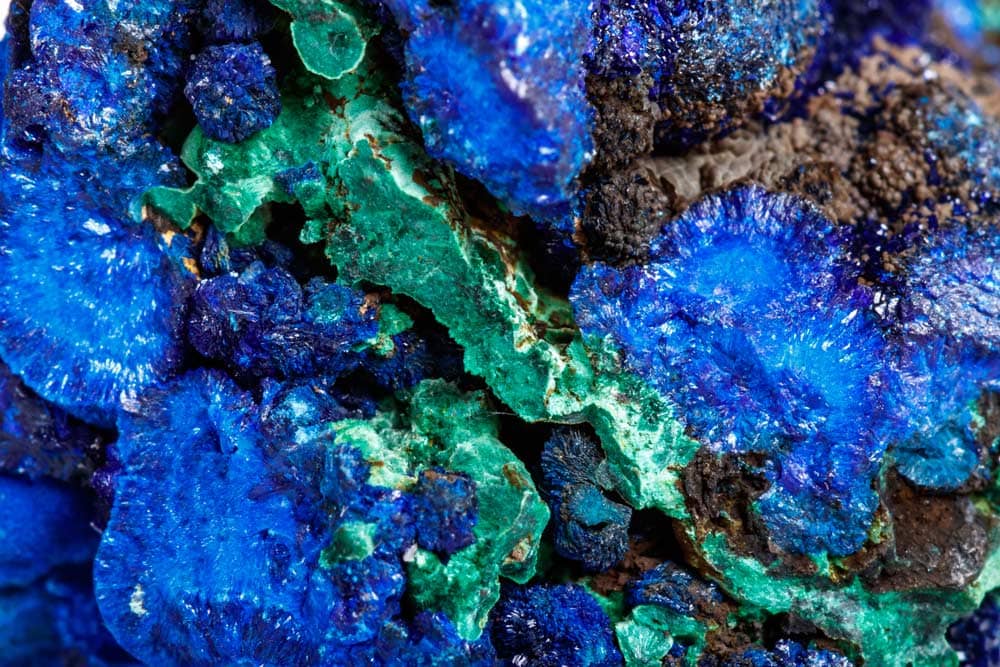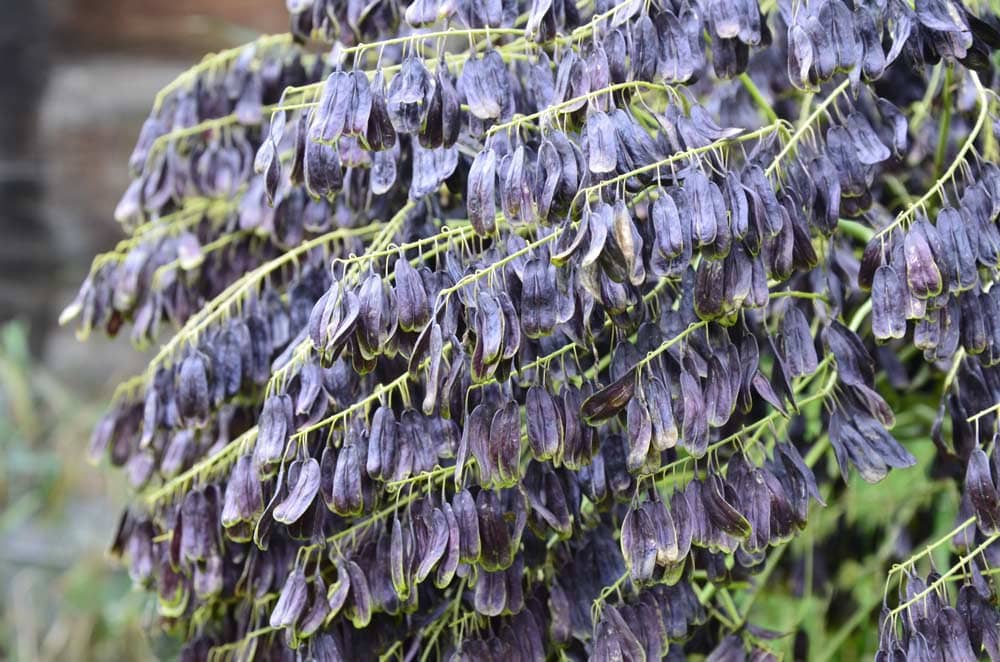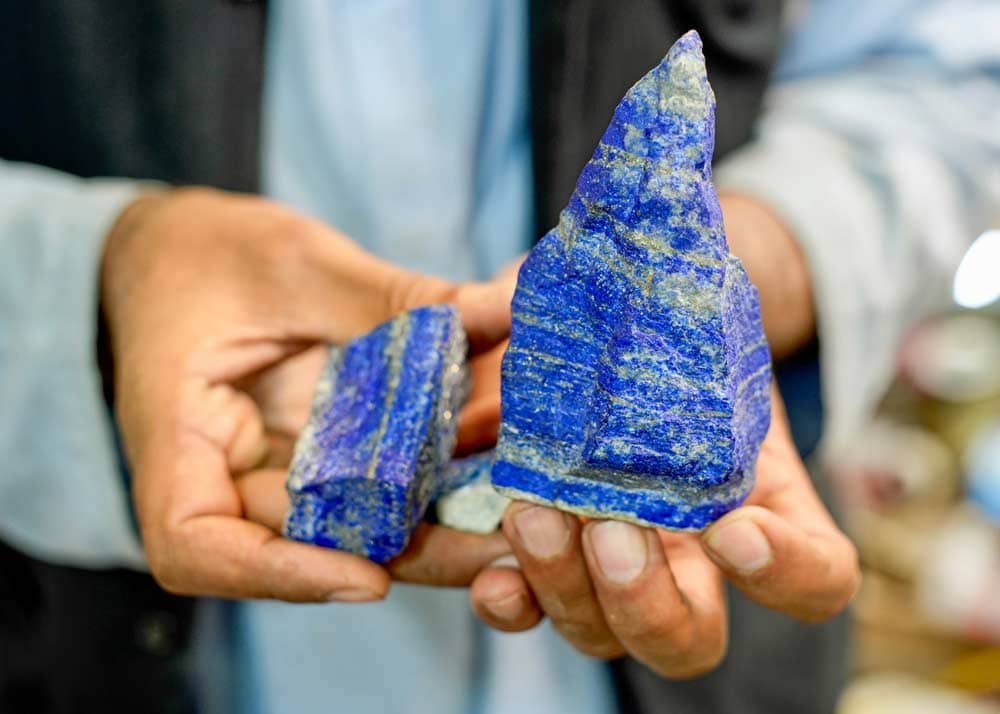Colours have fascinated and captured our imagination. While nowadays, a host of colours are readily available from your local stationery, procuring coloured pigments in the past was less straightforward. There was one hue that helped shape the course of history for 6,000 years!
Blue. There are few hues that have captivated the soul and stirred the imagination as much as this enigmatic and evocative colour. From the boundless skies to the depths of the ocean, blue has long been a symbol of the profound, the divine, and the infinite. Its journey is a dance of nature’s alchemy and human ingenuity — a tale that unfolds across ancient civilizations, masterful artworks, and the vibrant pulse of trade. Delving into the history of blue pigment is akin to embarking on an odyssey through time, tracing the luminous threads that have interwoven cultures, sciences, and the relentless human pursuit of beauty.
Ancient Civilisations: A Precious Commodity
The first known blue pigment was made from azurite, a mineral found in nature. However, Ancient Egyptians valued a rarer blue known as ‘Egyptian blue,’ made by heating sand, copper, and natron (a mineral salt found in dried lake beds). They used it extensively in murals, jewellery, and even the funerary mask of Tutankhamun.
Mesopotamian civilisations, meanwhile, employed the vivid lapis lazuli, a semi-precious stone sourced from Afghanistan’s mines. It was so revered that it was reserved for depictions of gods and the garments of rulers.

Classical Antiquity: Philosophies and Aesthetics
In Northern Europe and Britain, the ‘barbaric’ Celts were said to have dyed their bodies blue for battle using the dried and fermented leaves of the woad plant. This ritualistic body art might have been used to protect soldiers, or perhaps it had cultural significance.
Oddly enough, there are a lot of suggestions that the Ancient Greeks didn’t have a specific word for what we know as ‘blue.’ Oftentimes, Homer’s descriptions of the sea refer to it as ‘wine-coloured’ or ‘wine-dark.’ However, this could be a symbolic use, rather than literal. It doesn’t necessarily mean that Ancient Greek wine was blue or that the sea was red!
Both the Romans and the Greeks, however, adopted Egyptian blue and used it in various mosaics and frescoes. Some of the best examples can be seen in the mosaics of Pompeii!

Medieval Times: Rarity and Divinity
With the decline of the Roman Empire, knowledge and production of Egyptian blue faded. Lapis lazuli took centre stage, its brilliance unmatched but expensive. This intense blue pigment, ground from lapis, was named ultramarine (‘beyond the sea’), reflecting its exotic origins.
It became the colour of the divine, used predominantly in religious artworks. In Christian iconography, the Virgin Mary’s robes were often painted with ultramarine, symbolising her purity and importance. Trade routes, especially those of the Silk Road, facilitated the movement of lapis lazuli from Afghanistan to Europe, intertwining trade and art.

The Renaissance: Artistic Heights and New Discoveries
The Renaissance period saw a surge in the demand for blue pigments. Ultramarine was widely available and commonly used by Italian artists in the fourteenth and fifteenth centuries. However, it was once so expensive it cost more than gold.
Ultramarine’s high cost led artists to seek alternatives. Azurite was one, but its brilliance faded over time. The quest for the perfect blue drove innovation.
Industrial Revolution: Democratising Blue
The 18th century was transformative, to say the least. A search for an inexpensive blue dye for textiles led to the accidental discovery of Prussian blue, the first modern, synthetic pigment. Not only was it cheaper, but its stability and intensity also made it popular among artists.
The next big milestone was in 1824, with the invention of cobalt blue, a pure and brilliant pigment at a fraction of the cost of ultramarine, followed by cerulean in 1859 and phthalo blue in the 20th century. These discoveries democratised blue, making it accessible to a broader range of artists and industries.
Global Trade and Colonialism: The Influence of Indigo
While pigments were revolutionising the world of art, indigo, a blue dye, was shaping global trade and politics. Extracted from the leaves of the indigo plant, its demand surged as European nations expanded their empires. Indigo plantations became economic pillars in colonies, particularly in India. The trade and production of indigo influenced not only global commerce but also the cultural exchange between East and West.

Science and Art: A Symbiotic Relationship
The journey of blue is a testament to the symbiotic relationship between science and art. Chemists and artists often collaborated. For instance, George Seurat’s pointillism was influenced by scientific understandings of colour perception. The quest for various shades and tints of blue pushed scientific boundaries, and these discoveries, in turn, expanded artistic possibilities.
Contemporary Era: Blue in Modern Times
Across the canvas of history, artists have courted the allure of blue, allowing it to define and shape their masterpieces. Leonardo da Vinci teased its depths in the folds of the Madonna’s robes, while Vincent van Gogh captured the swirling, starry night in bold strokes of cobalt and ultramarine. The ethereal touch of blue in Johannes Vermeer’s Girl with a Pearl Earring contrasts starkly with the works of Pablo Picasso’s melancholic Blue Period, where the hue speaks of sorrow and introspection.
In the modern realm, Yves Klein became synonymous with his vibrant International Klein Blue, a testament to blue’s lasting influence on contemporary art. In a way, Klein’s work is a culmination of centuries of human fascination, exploration, and experimentation with blue.
The history of blue is a vivid tapestry of art, science, trade, and culture. From the tombs of the Pharaohs to the canvases of the Renaissance, the bustling markets along the Silk Road to the labs of modern chemists, blue has been a muse, a challenge, and a symbol of the endless human quest for beauty, understanding, and expression. Its 6,000 year journey underscores the interconnectedness of disciplines and civilisations, reminding us of the profound impacts such intersections can have on shaping human history. Think of that next time you look at the blue sky!
Further Reading
Finlay, V. (2004). Color: A Natural History of the Palette. Random House Trade Paperbacks
Clair, K. (2017). The Secret Lives of Color. Penguin Books.
Berke, H. (2007) The Invention of Blue and Purple Pigments in Ancient Times. Chemical Society Reviews, vol. 36, no. 1, pp. 15-30.





Comments are closed for this article!